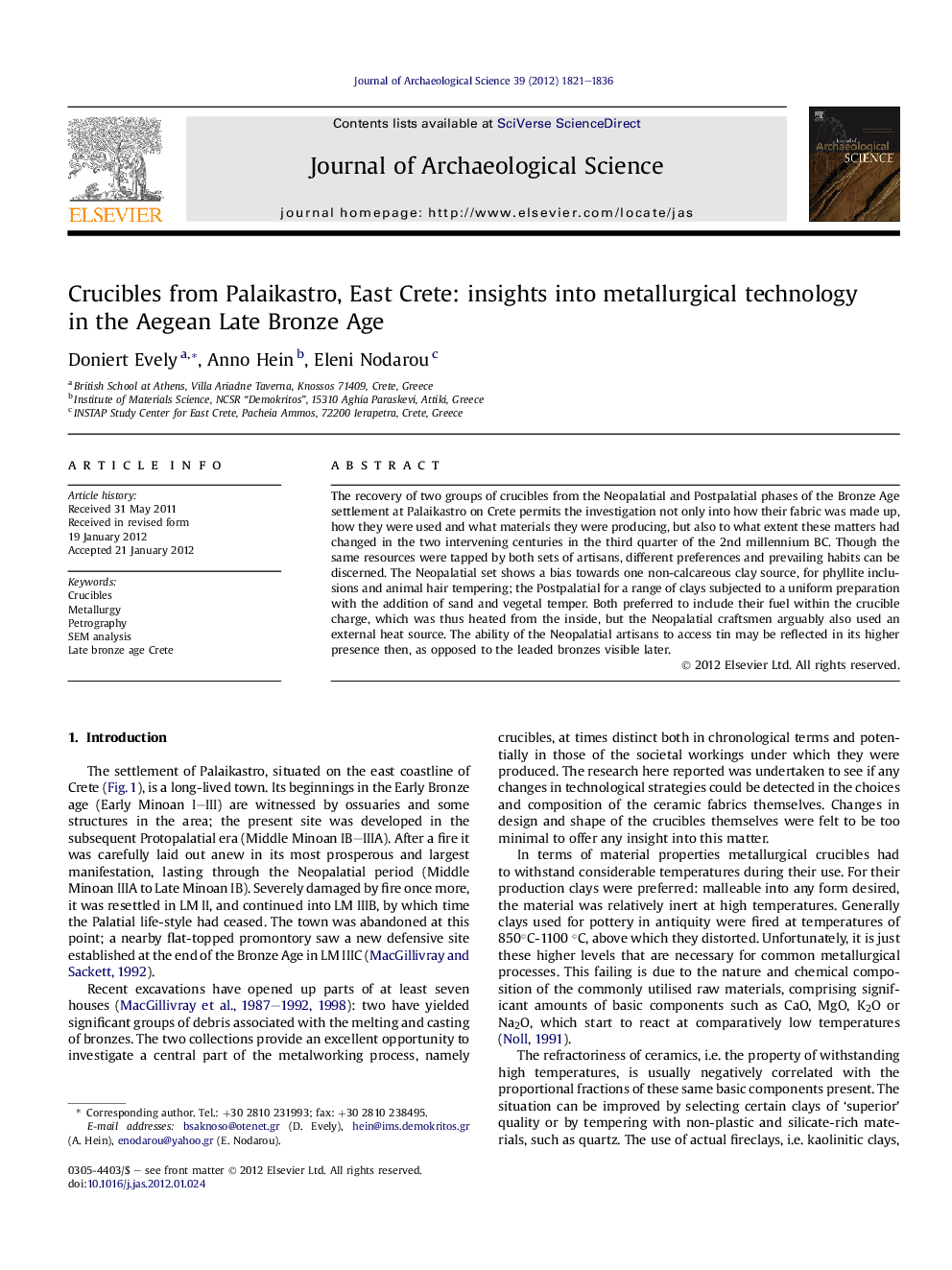| Article ID | Journal | Published Year | Pages | File Type |
|---|---|---|---|---|
| 1035685 | Journal of Archaeological Science | 2012 | 16 Pages |
The recovery of two groups of crucibles from the Neopalatial and Postpalatial phases of the Bronze Age settlement at Palaikastro on Crete permits the investigation not only into how their fabric was made up, how they were used and what materials they were producing, but also to what extent these matters had changed in the two intervening centuries in the third quarter of the 2nd millennium BC. Though the same resources were tapped by both sets of artisans, different preferences and prevailing habits can be discerned. The Neopalatial set shows a bias towards one non-calcareous clay source, for phyllite inclusions and animal hair tempering; the Postpalatial for a range of clays subjected to a uniform preparation with the addition of sand and vegetal temper. Both preferred to include their fuel within the crucible charge, which was thus heated from the inside, but the Neopalatial craftsmen arguably also used an external heat source. The ability of the Neopalatial artisans to access tin may be reflected in its higher presence then, as opposed to the leaded bronzes visible later.
► petrographic and SEM examination of two sets of Late Minoan crucibles. ► investigation of materials used to fashion them and properties resulting. ► estimation of working conditions: fuel positioning and heat gradients. ► changes seen in metallurgical practice between Neopalatial and Postpalatial Periods.
